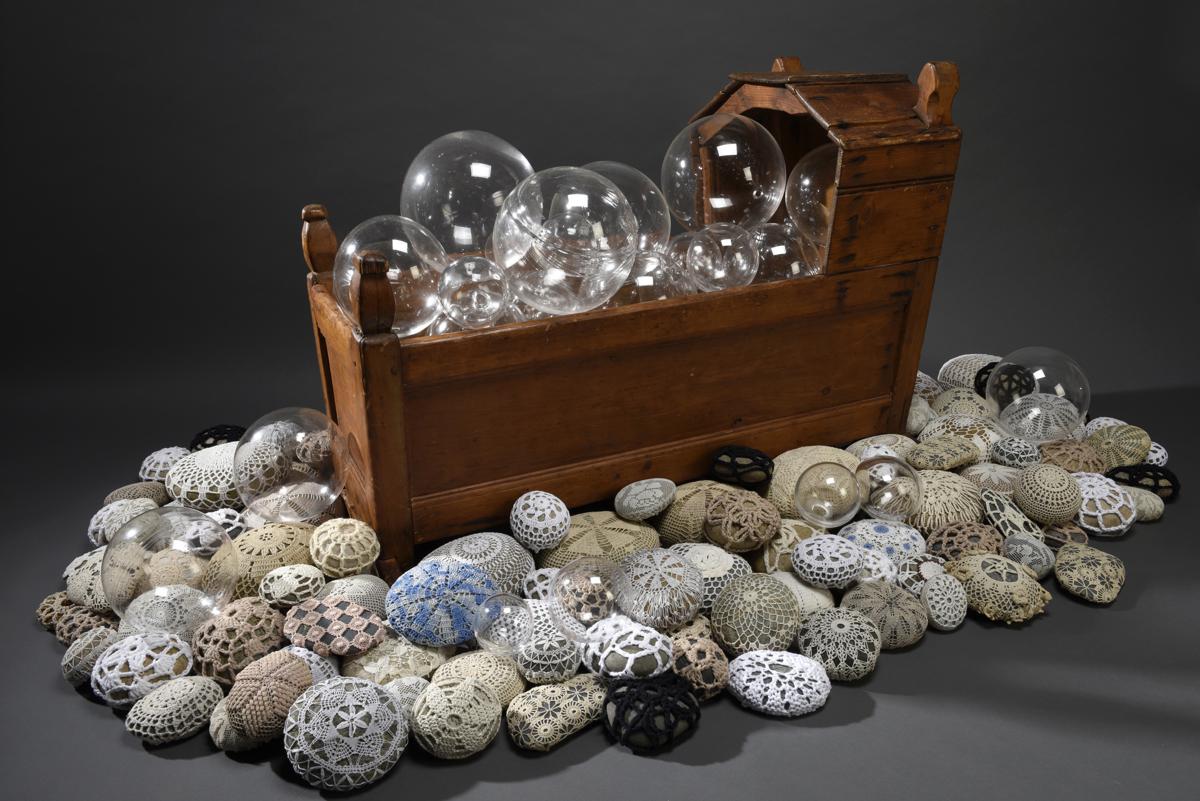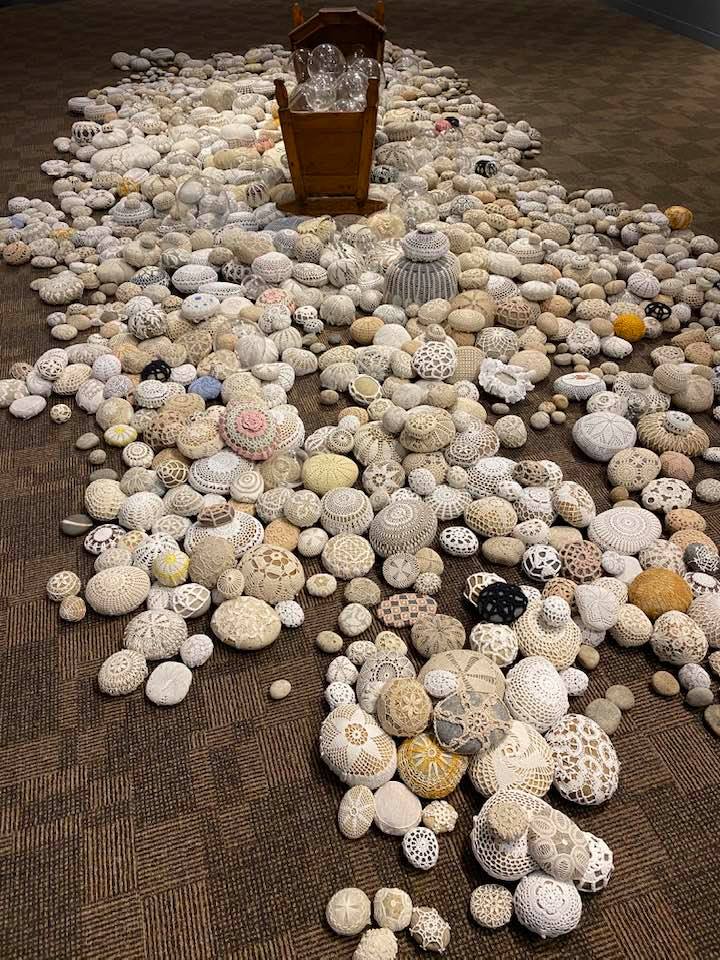December 8: The Lord of Hosts Comes Suddenly
♫ Music:
Day 10 - Tuesday, December 8
Title: THE LORD OF HOSTS COMES SUDDENLY
Scripture: Malachi 3:1
Behold, I will send my messenger, and he shall prepare the way before me: and the Lord, whom ye seek, shall suddenly come to His temple, even the messenger of the Covenant, whom ye delight in; behold, He shall come, saith the Lord of hosts.
Poetry:
Harvest
by Blaise Cendrars
(Translated by Monique Chefdor)
A six-cylinder car and two Fords in the middle
of the fields
In every direction as far as the horizon the slightly
slanting swaths crisscross in a wavering
diamond-shaped checkerboard pattern
Not a tree
From the North comes down the rumble and rattle
of
the automotive thrasher and forage wagon
And from the South come twelve empty trains to
pick up the wheat
THE LORD OF HOSTS COMES SUDDENLY
The temple to which Malachi is referring is Christ’s earthly body. In John 2:21, Jesus explains that his body is the temple. When the Jewish leaders demanded of Jesus a miraculous sign, Jesus said, “Destroy this temple, and in three days I will raise it up” (John 2:19). So in fact, Christ entering this world as a baby is Him coming to His temple. His earthly body was the temple.
In Marianne Lettieri’s Cradle with Bedrock, we understand the significance of the incarnation. I am struck by the juxtaposition of the glass orbs and the lace-covered rocks, and the way in which they are held by and situated around the wooden cradle, as if the cradle itself becomes a dwelling place. The glass orbs allude to the Holy Spirit and the joy and peace that Christ brings, and the bedrock of rocks with unique doily patterns allude to the foundation and specific lineage of Christ in the line of David. Christ came to his temple—to inhabit an earthly body--to be born, to live, and to die a human life fully God and fully man. As is sung in The Lord Comes to His Temple, “It is the child born of a virgin, It is the Word of God, Become flesh for us.” The Christ child who was placed in a wooden cradle at birth was our Savior whose hands were nailed to the wooden cross.
I remember staying the night several years ago as a guest at the home of Marianne Lettieri and her husband, and I remember her showing me the guest room and being pleasantly surprised that the guestroom was partially occupied with this collection of river rocks pushed to one side (the rocks that would be used in Cradle with Bedrock). An artist has to have a place to store her art materials, after all! I enjoy recalling this story, and there is of course a sense of whimsy to it, but I think it gets at something deeper too. A guestroom is a space into which a visitor is invited into--invited to make herself or himself at home. Christ entered this world as a baby. So on one hand, we might conceive of the metaphor as Christ making his home on earth: placing his cradle with the bedrock. But truly, we make ourselves at home in Him. Christ became flesh for us, so that we might be found in Him.
As we make our home in Christ this Advent of 2020, we are more cognizant of home and being home (a lot) and being in a time of waiting and the unknown. Simeon too was asked to wait, yet he believed that which was promised to him. He would see His Savior in his lifetime. Christ was brought to the temple by Mary and Joseph and presented there according to Jewish Law when he was eight days old. While at the temple, Simeon and Anna meet Jesus, and Simeon declares, “Now I can depart in peace, For I have seen my salvation” (Luke 2:29-30). May we, like Simeon, believe and trust in God’s promises and offer our praises to our God. Let us rejoice and adore Him! And as we make our home in Christ, He dwells in us, so in fact, we too are temples of the Lord.
Prayer:
Dearest Jesus, Holy Child,
Make Thee a bed, soft, undefiled,
Within my heart, that it may be
A quiet chamber kept for thee.
(A prayer of Martin Luther, from Prayers Across the Centuries, page 87)
Kari Dunham
Adjunct Professor of Art
Biola University
About the Artwork:
Cradle with Bedrock (several views)
Marianne Lettieri
2015
Cradle, glass spheres, river rocks, crochet, dollies
30” x 48” x 96”
Cradle with Bedrock is the most recent iteration of an evolving art installation. While the antique wood cradle and 60 blown-glass spheres have remained constant, previous installations included a field of broken glass, a mound of dirt, and a large tree branch on an asphalt school yard surrounded by yellow caution tape. For this version, Lettieri covered 250 river stones with delicate lacework created by a group of women, ages 14 to 94. The remainder of the coverings were doilies purchased at estate sales, thereby extending the “sewing circle” to include women from the past. Through this perspective, she explores the nurturing of dreams and aspirations, the brevity of life, and the temporality of creativity. Lettieri creates art with found objects and everyday items that embody, preserve, and challenge social systems and individual identity. She presents these castoff materials in new configurations, reinforcing the interconnectedness of people and communities through time and the shared human desire to remember.
https://civa.org/2019-featured-artists/marianne-lettieri/
About the Artist:
Marianne Lettieri is a visual artist whose mixed media constructions and art installations investigate shifts in cultural and individual values associated with everyday objects and discarded materials. She presents these artifacts in new configurations that reinforce the interconnectedness of people and communities through time and infuse historical symbols with contemporary meanings. Solo exhibitions include Never Ending Thread at San Jose Museum of Quilts and Textiles; Marianne Lettieri: Reflections at San Francisco Museum of Craft and Design; Don't Get the Wrong Impression at Fort Worth Community Art Center, and Changing Context at Azusa Pacific University. Numerous books and art journals have featured her art, including Placemaking and the Arts by Jennifer Allen Craft; Art-Making Collections & Obsessions by Lynne Perrella; Image Journal, SEEN Journal, and Ruminate Magazine. She has an M.F.A. in spatial arts from San Jose State University and a B.F.A. in drawing and printmaking from University of Florida.
https://www.mariannelettieri.com/
Music #1:
“The Lord Comes to His Temple“ from the album What Hand Divine
Lyrics:
The Lord comes to his temple; let us rejoice and adore him.
Tell us, Simeon,
whom do you carry in your arms,
as you enter the Temple so joyfully?
To whom do you address your words:
“Now I can depart in peace, for I have seen my salvation”?
It is the child born of a Virgin;
it is the Word of God become flesh for us.
Surrounded with the sounds of inspired songs,
we also have encountered the Christ.
We have welcomed the One who brought salvation to Simeon.
This is the One who spoke through the prophets.
Performers:
The Compline Choir is a unique community of laypersons with diverse beliefs that seeks to musically express a concern for the nurture and care of the soul. All members of the Compline Choir, including its director, are volunteers and freely give of their time and talents to sing the Office of Compline. The choir sings Compline every Sunday night at 9:30 PM PST at Saint Mark’s Episcopal Cathedral in Seattle, Washington.
https://www.complinechoir.org/about/
https://saintmarks.org/
Composer/Lyricist:
Plainchant; arr. Peter R. Hallock
Peter Rasmussen Hallock (1924–2014) was an American organist, choirmaster and liturgist. He was the founding director of the Compline Choir at St. Mark's Cathedral in Seattle, where he served from 1951 to 1991 as organist and choirmaster. Hallock pursued organ studies at the University of Washington and also studied at the Royal School of Church Music in the UK.
https://en.wikipedia.org/wiki/Peter_Hallock
Music #2:
Messiah, HWV 56, Pt. 1: 5. Thus Saith the Lord
Messiah Performers/Musicians/Lyricists/Composer:
Unless otherwise noted, all Messiah performances are by Margaret Marshall, Catherine Robbin, Anthony Rolfe-Johnson, Robert Hale, Charles Brett, Saul Quirke, the English Baroque Soloists, and the Monteverdi Choir conducted by Sir John Eliot Gardiner. Biographical information for the performers and musicians can be found by clicking here.
Lyrics:
Thus saith the Lord, the Lord of hosts:
Yet once a little while and I will shake
the heavens and the earth, the sea
and the dry land.
And I will shake all nations;
and the desire of all nations shall come.
The Lord, whom ye seek,
shall suddenly come to His temple,
even the messenger of the Covenant,
whom you delight in; behold,
He shall come, saith the Lord of hosts.
About the Poet:
Frédéric-Louis Sauser (1887-1961), better known as Blaise Cendrars, was a Swiss-born novelist and poet who made his home in France. Poems from his early period utilized direct experience and a montage style gleaned from cinema that was instrumental in influencing the modernist avant-garde style. After returning from the World War I battlefield, Cendrars wrote and directed films. He became a war correspondent during the early months of World War II, but after the fall of France in 1940, he retired to his country house where he began work on his war memoirs that most critics consider his most important work: L’Homme Foudroyé (The Astonished Man, 1945), La Main Coupée (Lice, 1946), Bourlinguer (Planus, 1948), and Le Lotissement du Ciel (Sky, 1949). Cendrars was awarded the Grand Prix Littéraire de la Ville de Paris just weeks before his death in 1961.
https://www.poetryfoundation.org/poets/blaise-cendrars
About the Devotion Author:
Kari Dunham
Adjunct Professor of Art
Biola University
Kari Dunham is an artist and teacher living in Orange County, CA. Through her practice of painting the ordinary and everyday, she gives voice to the quiet corners and objects of the home. Kari serves as an adjunct art professor at Biola University, Irvine Valley College, and Laguna College of Art + Design.

